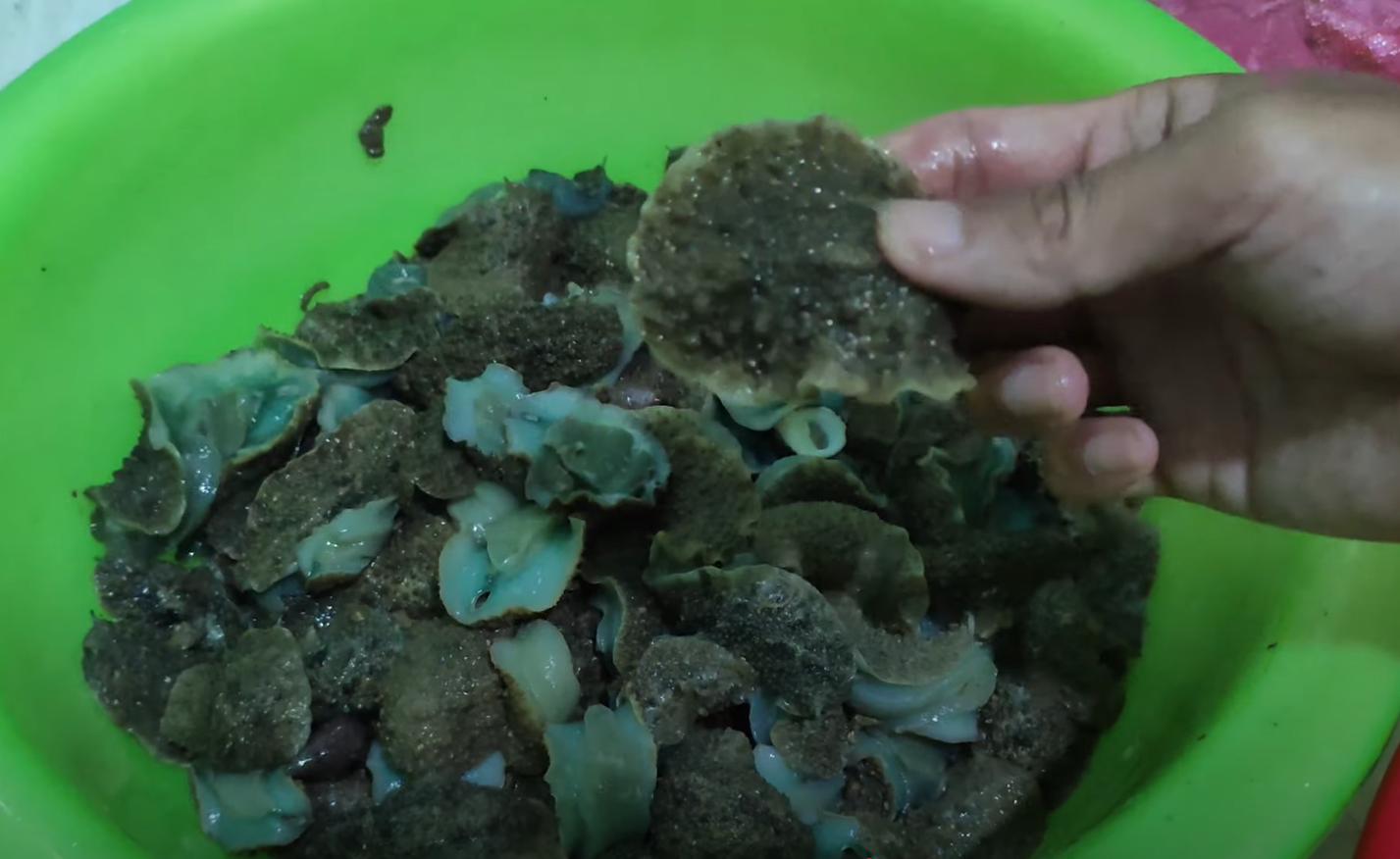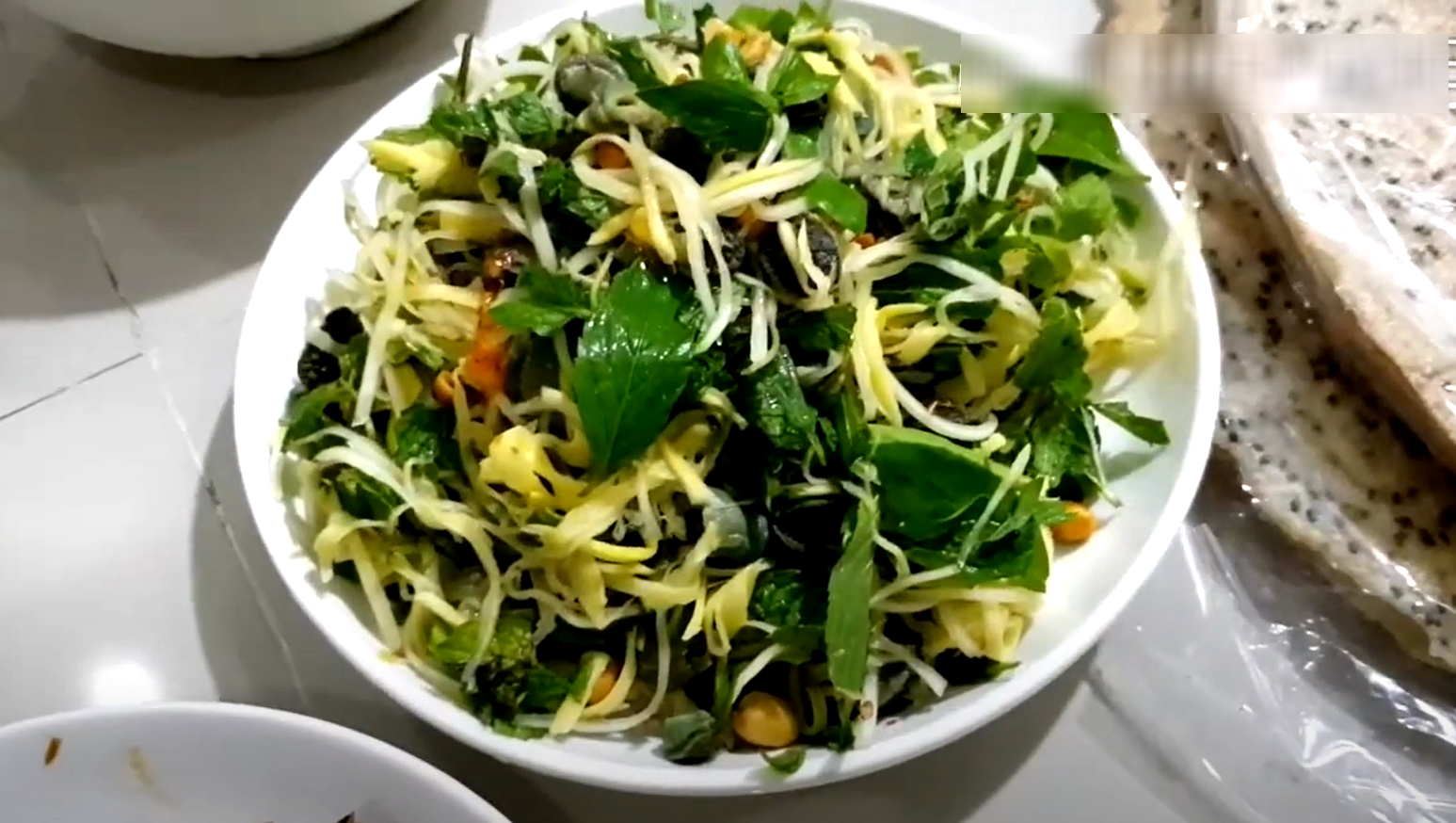Though its appearance may startle at first glance, the sea creature known as “con lu” has become a beloved local specialty in Thanh Hoa-crunchy like abalone, easy to prepare, and available by the kilo after just a few hours of nighttime hunting.

In Vietnam, con lu-also known by various names like con xu xi, lu bien, or ba chan in the Mekong Delta-can be found in provinces such as Quang Ngai, Quang Ninh, and Binh Thuan. However, it is most abundant and widely consumed in Thanh Hoa.
This soft-bodied mollusk lacks a protective shell, has a slightly convex back, and moves slowly. Its size and color can vary depending on its habitat, with individuals ranging from the size of a toe to as large as a duck egg.

According to Quang Duc, a fisherman from Hau Loc, Thanh Hoa, con lu has a rough, slightly firm skin, with a brownish back and a belly that may appear yellow, greenish, or even dark in color-somewhat resembling abalone.
“In Thanh Hoa, con lu is found along coastal rock reefs in districts like Hau Loc, Nga Son, Quang Xuong, and Hoang Hoa. The ones here are larger than those found clinging to mangrove trees in the Mekong, where they even crawl on leaves,” he said.
Duc noted that con lu typically appears in the summer, with abundance varying yearly based on weather patterns. During the day, they hide in crevices, under seaweed, or among coastal rocks. They emerge at night or in the rain to forage, making nighttime the prime time to catch them using flashlights.
“On good nights, I can catch several kilos, selling for over 500,000 VND (about USD 20) to regular buyers. If the catch is smaller, I keep them for cooking,” Duc added.



Despite their strange, rugged look, con lu are a culinary favorite in Thanh Hoa and can be made into various dishes-stir-fried with lemongrass and chili, cooked into porridge, steamed, or made into salads. Due to their slimy coating, thorough cleaning is essential.
To clean them, locals soak them in sour water (like tamarind juice, fermented bamboo water, or vinegar), or rub them with ash or limewater to remove slime and grime.
After soaking, the belly is sliced open to remove the intestines, and the cleaned meat is rinsed a few more times before cooking.
Some also blanch the meat briefly in hot water to boost its crunchiness before cooking. The cleaned meat is often cut into two or four pieces, stir-fried quickly with garlic, lemongrass, and chili. It should only be cooked until just done to retain its sweet flavor and crunchy texture.
Ngo Thu, a Hanoi resident who has visited her husband’s family in Quang Xuong during the summer, shared that the meat is tender yet chewy like squid cartilage or abalone.
“Although they look a bit scary, once prepared with the right ingredients and seasoning, the result is surprisingly delicious. They’re cheap too-about 60,000 to 70,000 VND per kilo (USD 2.35 to 2.75) when bought fresh and uncleaned. You rarely see these in the city,” she noted.
Thao Trinh